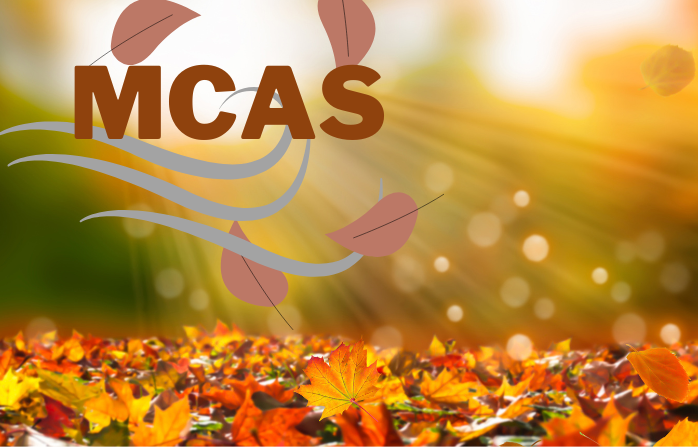By Joan Reissman
Test prep can’t replace learning math but practice is a way to strengthen skills and build knowledge.
Summer is long in the tooth, which means fall will be here soon. As much as we want to cling to our beach blankets, it’s time to think about the approaching school year. The MCAS questions in Grade 10 ELA and Mathematics have been released. School staff had August 9-12 to examine raw scores and hand-scored constructive responses and report any discrepancies through the DESE security portal. The final scaled scores are generally released in September. There are now 3 years of released tests for Grade 10 MCAS 2.0, so we have a substantial foundation to analyze patterns.
The patterns in math over the 3 years are remarkably consistent, with little variation in number of questions or percentage of questions in each domain. In ELA there is more variation: 2019 and 2021 are almost identical, but in 2022 there was a shift in domain emphasis.
“Test preparation can never replace actually learning the math, but practice is a long-established way to strengthen skills and build knowledge.”
This is really good news. It will help teachers and students focus on long- and short-term preparation. Over the past 3 years, only 14 standards have been repeated all three times in math and 12 standards in English.
What does this mean? The goal, as always, is to build skills. That will never change. However, now that we have a good idea of what standards students will see on the MCAS, we can pay extra attention to those standards during the year as we progress through the daily curriculum. While building student skills, we can include some practice MCAS questions as a supplement. Test preparation can never replace actually learning the math, but practice is a long-established way to strengthen skills and build knowledge. And why shouldn’t the practice exercises replicate the assessment format students will eventually encounter?
MATH
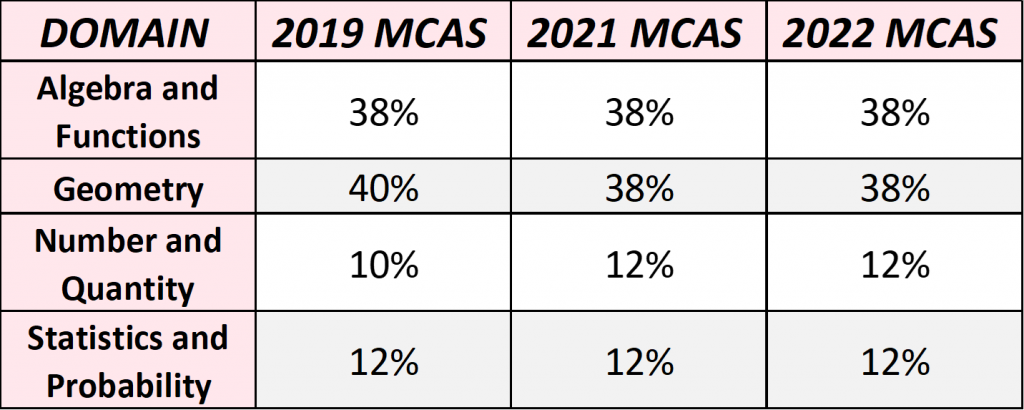
As shown, the domain distribution over the past three years is nearly identical. That doesn’t mean all the questions touch exactly the same standards (see below), but the domain distribution has remained consistent. We can be fairly confident that the nearly 80% emphasis on Algebra and Geometry will continue in MCAS testing. (This distribution reflects the 2017 standards revision. On the old Legacy MCAS, Statistics and Number and Quantity were a much higher percentage of the test.)
MATH
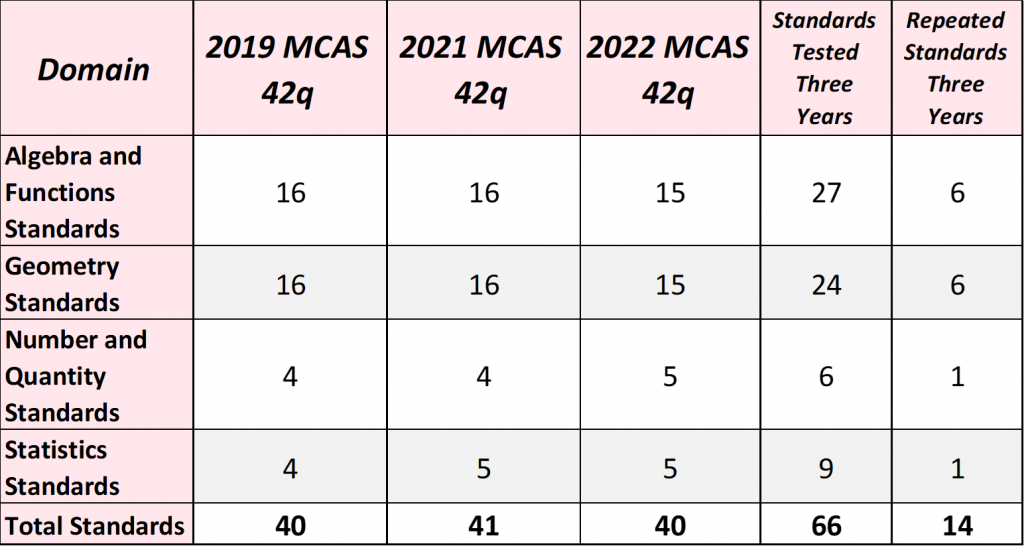
The number of standards tested in each domain is also very consistent, but different standards were tested within the domains. Each year there have been 42 questions, but almost every question derives from a different standard within the domain (40-41 standards). 25 standards have appeared only one time in the past three years. Only 1 or 2 standards are repeated within each test year. Only 14 standards have been on the exam all three years. This content distribution should be kept in mind throughout the year as classes move through the curriculum. Teachers should make sure to cover standards that have been on the test, especially those that have appeared all three years.
ELA is a little different. Most questions test one standard, but the two constructed response questions usually test 5. Even though there are 30 questions every year, 28 questions test 1 standard while 2 questions test 5 standards. Unlike the consistency of Math, ELA has changed its emphasis in 2022.
ELA
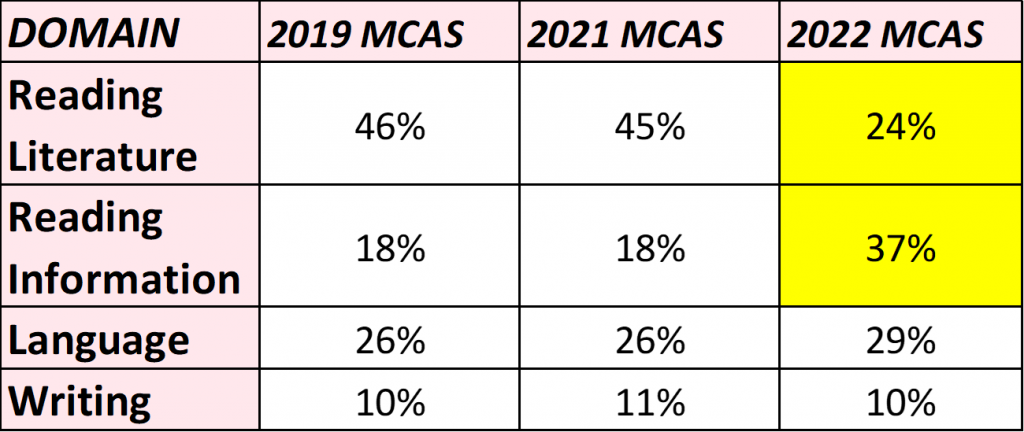
This chart shows a major move away from fiction and toward non-fiction in 2022. Before MCAS 2.0, non-fiction was a significant portion of the exam (45% in 2018, 43% in 2017, 35% in 2016). In 2019 and 2021, that emphasis changed to literature (fiction). In those two years, there was only one set of non-fiction passages with one constructed response. In 2022 there was still only one non-fiction constructed response, but twice as many non-fiction questions. This is only one test year, but a change of such magnitude is probably not an aberration. Everybody loves reading novels, but the growing emphasis on critical thinking, inquiry and analysis, information literacy, and other higher-order skills indicates a trend.
ELA
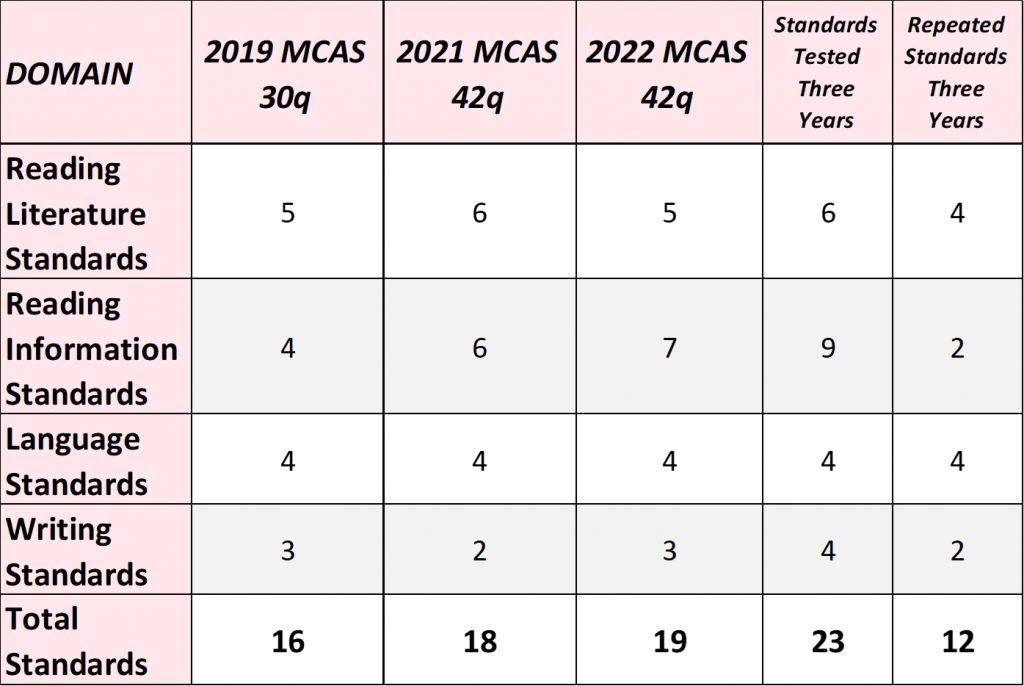
This chart shows a more stable pattern over the three years. Although the emphasis on non-fiction increased in 2022, the number of standards tested in each domain remained consistent. In ELA, it is hard to isolate standards because every passage touches on multiple standards. Teachers should make sure that students are comfortable with common questions that appear in multiple years. Only 12 standards have been tested in all three years.
One element of MCAS 2.0 ELA that has become more important is comparing texts. Students must answer questions in two or three passages for almost all questions. From 2019 to 2022 only 0-2 question sets are not comparative. This means that students need training in this technique. Teachers should assign practice in connecting and comparing multiple texts throughout the year. This work will help students strengthen their analytical ability, and therefore improve their test performance.
Students and teachers should look forward with confidence to the coming year. Building skills is the goal; focusing on MCAS-related standards throughout the year can both strengthen skills and improve test performance. JFYNetWorks can provide guidance and support with analytics and instructional content to support the core curriculum. But don’t wait until February: Meaningful integration of grade-level skill-building and MCAS preparation takes the whole year.
The time to start is September.
Joan Reissman, the MCAS Maven, is a veteran JFYNet Instructional Specialist.
Other posts authored by Joan can be found here.
HOW ARE WE DOING? In our pursuit to serve up content that matters to you, we ask that you take a couple of minutes to let us know how we’re doing? Please click here to be navigated to our JFYNet Satisfaction Survey. Thank you!

